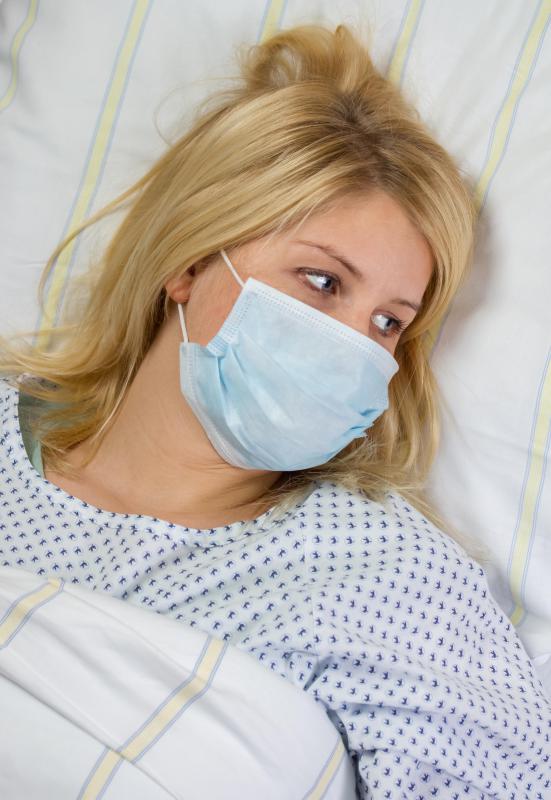At WiseGEEK, we're committed to delivering accurate, trustworthy information. Our expert-authored content is rigorously fact-checked and sourced from credible authorities. Discover how we uphold the highest standards in providing you with reliable knowledge.
What Are Transmission-Based Precautions?
Transmission-based precautions are special measures taken in a health care environment when a patient has, or might have, a transmissible disease. These are applied in addition to the standard precautions used with all patients to limit the spread of disease. In the event care providers believe transmission-based precautions are necessary, this may be noted on a patient’s chart and in other locations to make sure all personnel who interact with the patient are aware of the concern. Each facility has its own protocols, but they are often similar, because they are based on universal recommendations.
Three sets of precautions are available to address different infectious agents including contact, droplet, and airborne. Contact precautions can be used when direct contact with a patient might spread disease, as for example when patients have severe diarrhea caused by bacterial infections. If a condition can be transmitted by droplets in secretions like sneezes, without direct contact, the next level is necessary. Certain pathogens can become airborne, traveling readily through a facility, and these require airborne precautions to protect other patients and providers.

In the case of contact transmission-based precautions, the patient may be kept in a private room or with a patient who has a similar diagnosis. Care providers should wear gloves and use dedicated instruments that can be sterilized or discarded after discharge. The patient should avoid leaving the room unless a specific procedure is necessary. People who come into contact should wash their hands afterward.

Patients requiring droplet transmission-based precautions need some extra care. They need to be isolated in private rooms, with the precautions listed above. In addition, care providers should wear masks around the patient and ask the patient to wear a mask if it’s necessary to leave the room. Secretions should be handled with wipes or tissues that can be discarded in a biohazard bag. Visitors may be more limited, and must also observe the transmission-based precautions.

Airborne precautions require isolation in a room with pressurized air flow to prevent air inside the room from escaping. Masks, gowns, and gloves are worn around the patient and in the event of a critical procedure where the patient needs to leave the room, adequate protection should be provided. These precautions on top of the regular basic precautions used with all patients can radically reduce the risk of spreading disease.

Certain pathogens are so serious that patients may need to be placed in isolation units. The infection controls in such units are extremely tight and may not permit visitors. These measures are used when patients have infections known to be extremely lethal and aggressive.
AS FEATURED ON:
AS FEATURED ON:














Discuss this Article
Post your comments